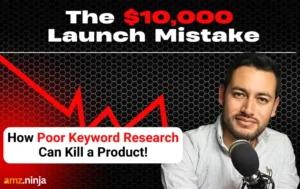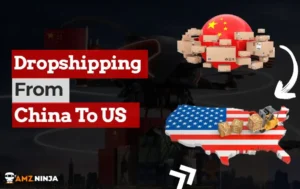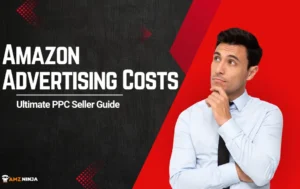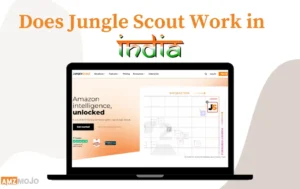Thinking about starting an Amazon FBA business? You're not alone – thousands of entrepreneurs are drawn to the temptation of Amazon's massive customer base and hands-off fulfillment process. But before getting into the business, it's crucial to understand the Amazon FBA startup costs involved.
Running an FBA business isn't just about listing products – there are fees, inventory costs, tools, and services to account for too. From the initial investment required to get your products manufactured or sourced, to Amazon's cut of every sale, to the monthly subscriptions for software that keeps things running smoothly.
In this guide, we'll break down all the expenses – both upfront and ongoing – so you can make the right decision about whether the FBA model is right for your business goals and budget.
Amazon FBA Startup Costs
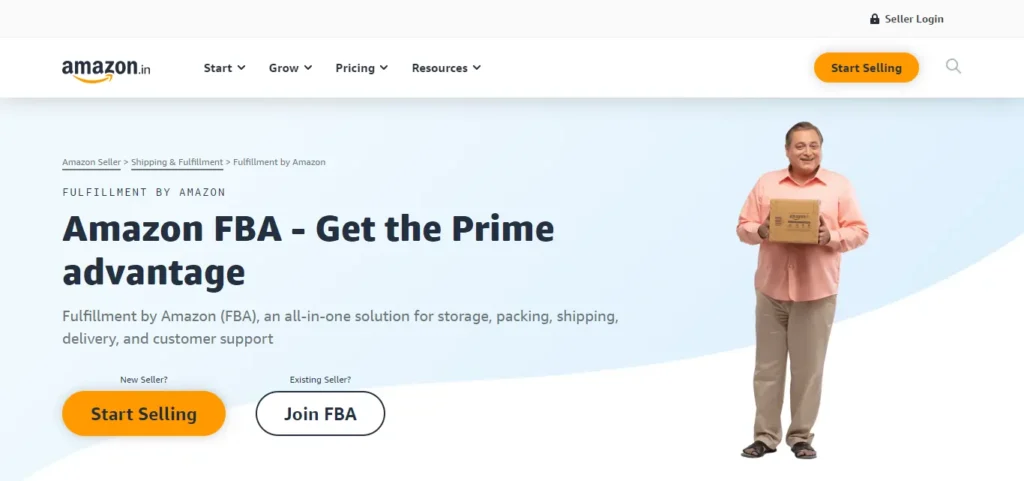
So, you're thinking about jumping into the Amazon FBA game? Smart move! But before you start dreaming of swimming in profits, let's talk about the cash you'll need to get started.
Initial Expenses Breakdown
Starting an Amazon FBA business isn't free, but it doesn't have to break the bank either. Here's a quick look at the main costs:
| Expense Category | Estimated Cost |
|---|---|
| Amazon Professional Seller Account | $39.99/month |
| Inventory (Initial Stock) | $1,000 – $2,000 |
| Product Samples | $50 – $200 |
| UPC Codes (GS1 Barcodes) | $30 per barcode |
| Shipping to Amazon Warehouses | $200 – $500 |
| Initial Advertising and Marketing | $100 – $500 |
| Miscellaneous Costs | $100 – $300 |
So, you're looking at a total startup cost between $2,570 and $3,570.
Legal and Registration Costs

You can't just dive in without covering your legal bases. Here's what you'll need to consider:
Business Structure and Registration
Most Amazon sellers set up an LLC (Limited Liability Company) for liability protection and tax benefits. Depending on where you live, forming an LLC can cost between $50 and $150.
Tax Registration and Licenses
You'll also need to register for taxes and get any necessary licenses or permits. This can run you a few hundred bucks. Think state tax registration, sales tax permits, and any industry-specific licenses.
GS1 Barcodes
To list your products on Amazon, you'll need GS1 barcodes. These cost about $30 each. They're crucial for tracking inventory and keeping Amazon happy.
Don't forget to explore other related articles, like Amazon FBA Freight Forwarders to make your operations smoother.
Design Expenses

Design expenses are key to making your product look top-notch on Amazon. These costs can vary, but they're essential for building a strong brand that stands out.
Branding and Product Packaging
Branding and product packaging are must-haves for any Amazon FBA business. Good branding gives your products a unique identity, helping them pop in a crowded market. Design costs for branding include logo design, product packaging, and other brand materials.
| Branding Expense | Estimated Cost |
|---|---|
| Logo Design | $100 – $300 |
| Product Packaging Design | $200 – $500 |
| Brand Materials | $100 – $200 |
These numbers can vary for the logo and product design depending upon the service providers you opt for.
Spending on quality packaging can change how customers see your product. It not only keeps the product safe but also makes the unboxing experience special, leading to good reviews and repeat buys.
For more tips on branding your Amazon FBA business, check out our article on succeeding with Amazon Wholesale Label vs FBA Private Label.
Professional Photography
Good photos are a big deal when listing products on Amazon. High-quality images attract buyers and show off the product clearly. These photos should highlight the product's features and benefits, making it easier for customers to decide to buy.
| Photography Expense | Estimated Cost |
|---|---|
| Product Photography | $200 – $500 |
| Amazon Listing Images | $100 – $300 |
Hiring a professional photographer ensures your product images are top quality and meet Amazon's image rules. This can boost sales and make customers happier.
👉 Costs are based on industry standards and can vary depending on the service provider you opt for.
Inventory Costs
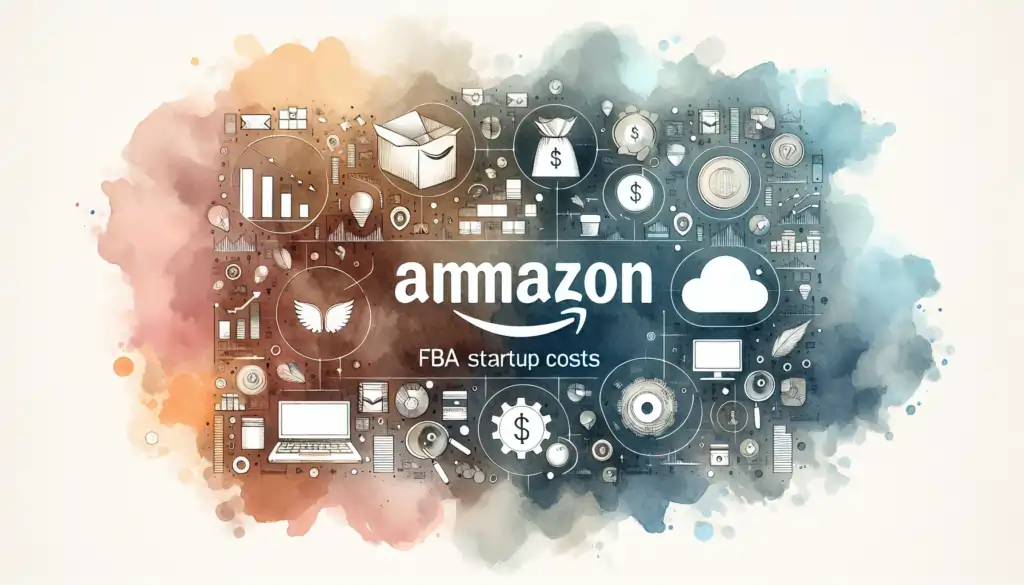
Managing inventory costs is a big deal when you're trying to make it big with Amazon FBA. These costs can swing wildly based on a bunch of factors. So, let's break down what makes up these expenses and how shipping and logistics can mess with your budget.
What Affects Inventory Costs?
Inventory expenses are one of the big-ticket items when you're starting an Amazon FBA business. Here's what you need to keep an eye on:
Shipping and Logistics Fees
Shipping and logistics fees are another big part of inventory costs. These fees cover everything from getting your products from the supplier to the Amazon warehouse and then to the customer.
Marketing Budget

Managing your marketing budget is key to making your Amazon FBA business thrive. Let's break down why marketing matters and explore some advertising strategies to get the most bang for your buck.
Why Marketing Matters?
Marketing is your ticket to getting noticed. Even if you have the best product, without marketing, it's like shouting into the void. You need to spend on ads—whether on Amazon, social media, or other online spots. According to Sellersessions, you’ll need at least a few hundred bucks to get started.
A solid marketing budget ensures your products get the spotlight they deserve. Sponsored listings on Amazon can eat up about 7% of your gross revenue just to keep sales steady, and up to 10% if you want to grow. New listings might need a few thousand dollars in sponsored ads to get noticed.
| Marketing Expense | Estimated Cost |
|---|---|
| Initial Advertising Budget | $700 – $1,000 |
| Sponsored Listings | 7% – 10% of Gross Revenue |
| Social Media Campaigns | Varies (starting from a few hundred dollars) |
| PPC Advertising | Included in the Initial Advertising Budget |
Advertising Cost and Strategies
To stretch your marketing dollars, mix up your advertising tactics to hit your target audience just right.
Sponsored Products and Sponsored Brands
Amazon's got options like Sponsored Products and Sponsored Brands. Sponsored Products are pay-per-click (PPC) ads that push individual listings, while Sponsored Brands highlight your brand and a bunch of products. These ads pop up in search results and on product pages, boosting visibility and driving traffic to your listings.
Social Media Advertising
Using social media platforms like Facebook, Instagram, and Pinterest can help you reach more folks. Create engaging content and run targeted ads to draw potential customers to your Amazon listings. A well-thought-out social media campaign can complement your Amazon ads and drive more traffic to your products.
External Advertising
Think about spending on external ads like Google Ads or influencer marketing. Teaming up with influencers who vibe with your brand can help you reach a more specific audience. External ads can drive traffic to your Amazon listings and boost sales.
Budget Allocation
Spending your marketing budget wisely is crucial. According to Quora, you should set aside $700-$1,000 for advertising, covering both Amazon and other platforms. New sellers often drop between $2,000 to $5,000 on inventory and setting up ads.
Top Queries Related to Amazon FBA Startup Costs
What are the Typical Startup Costs for an Amazon FBA Business?
Most new sellers spend between $2,500-$5,000 to start an Amazon FBA business, covering product costs, Amazon fees, and other initial investments.
How Much Inventory Investment Is Needed to Start?
A common starting inventory investment is around $2,000 for 500 units at $4 per unit including manufacturing and shipping costs.
Are There Ways to Reduce the Startup Costs?
Yes, options include using retail arbitrage instead of private labels, ordering less initial inventory, and finding lower-cost products to sell.
What is the Typical Sample Product Cost before Ordering Inventory?
Most suppliers charge around $100 per product sample, so budget $300 for getting samples from your top 3 potential suppliers.
How Much Can I Expect to Make from an Amazon FBA Business?
Profits vary widely, but sellers who start with less investment tend to break even faster, within 3-6 months for many.
What's a Low Startup Cost Example for an FBA Business?
With a $0.75 product cost, $300 samples, $40 seller fee, you could start an FBA business for around $665 with 500 units.
Get Set Scale
As we have seen, the startup costs for an Amazon FBA business run the gamut from just a few hundred dollars on the low end to $5,000 or more if you want a more substantial initial investment. The beauty of the FBA model is that you can start small and grow your business over time as profits allow.
The most important things are picking a product you're excited about, doing your market research, and understanding all the fees involved from Amazon and other services. With some planning and the right strategies, an FBA business can be an incredibly lucrative way to build an online income stream.
So don't let the startup costs scare you off! Even a modest initial investment can get an FBA business off the ground. Just be sure to crunch the numbers and have a solid plan.
The world's biggest online marketplace is waiting for your products!


